Types Of Pearls
Jump To:
Across the world, Pearl is the only gem that is created by living creatures. Since antiquity, Mollusks like oysters and mussels generate these priceless gems that have attained great popularity. There are various types of pearls available in a wide range of sizes and forms. However, white and round-shaped gems are among the most desirable. Pearls are famous for their appealing beauty, which comes from their characteristic shine, which is generally referred to as a jewel’s luster.
Pearls create a defense against irritants like gravel or fishbone that float into a pearl’s oyster’s cover. The oyster secretes layers and layers of sedimentary rock over the allergen as a protective mechanism, which after some time forms a pearl.
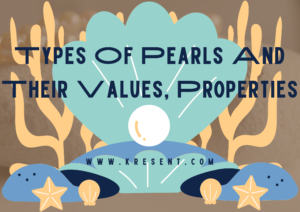
There are different types of pearls found in the world such as:
Natural Pearls
Natural pearls are extracted from the wilder regions. Due to various factors, certain varieties are relatively rare. To begin with, one out of every 10,000 clams in the wild creates a pearl.
Furthermore, many wild marine species are captured throughout time, because of which the population has considerably decreased. Natural marine diamonds are scarce which are available in the market nowadays and can fetch exceptionally high prices.
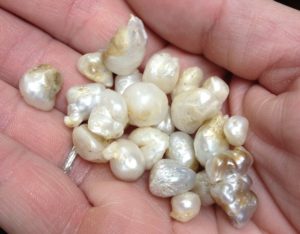
Cultivated Pearls
Kokichi Mikimoto fulfilled his longtime dream of cultivating pearls in 1893, after nearly two decades of his attempt. He accomplished this by using a nucleus into an oyster, which prodded the creature to shackle the nucleus into layers of jewel.
Cultured pearls account for all pearls on the market today. They can be found in a variety of colors, sizes, and clusters, based on the region from which they originated.
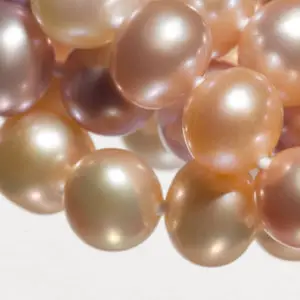
Akoya Pearls
The first kind of farmed pearls to be out in the market were Akoya Pearls. As a result, you’re more likely to have seen an Akoya Pearl necklace than a freshwater necklace. Akoya pearls are the traditional white pearls seen in movies and award ceremonies. Because of their sparkling glitter, they stand out from the crowd.
Their elegant appearance and timeless grace make them great accessories for weddings and special events. As a result, they continue to be popular among brides and jewelry and creative professionals. Everything inside the Akoya Pearl Oyster is white, as are Akoya Pearls. They are available in pink and cream shades.
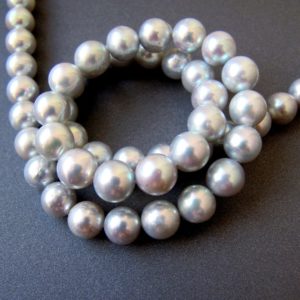
Biwa Pearls
Named after Lake Biwa, Biwa Pearls are found in Japan. They’re mussel-cultured freshwater pearls. They are popular for their distinctive curves and odd shapes. Biwa Pearls are usually in the shape of grains of rice or a stick.
They are available in two natural colors: white and pink. Natural green and blue can also be seen on occasion. Many Japanese people think that Biwa Pearls have therapeutic capabilities and cleanse the wearer’s physical and mental health of unwanted thoughts.
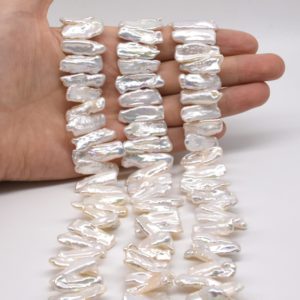
Keshi Pearls
Keshi Pearls are famous for their distinctive forms and beautiful sheen. As a result, these pearls are incredibly fashionable and ideal for free-form outfits.
Freshwater or seawater Keshi Pearls are available, with saltwater Keshi Pearls being the most popular. People who still believe in Astronomy consider these jewels in high regard. Pure Pearls is one of the rare jewelry companies that sell freshwater natural Keshi pearls, which are extremely rare.
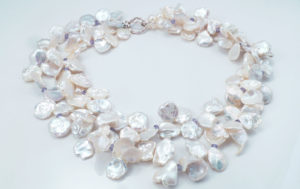
Tahitian pearls
Tahitian pearls are the only ones that naturally occur in black, grey, and peacock tones. The Dark-skinned Pinctada Margaritifera Mussel, which can be found in the oceans of French Polynesia, produces them.
The Tahitian Pearls are mostly dark-skinned, although they can also be found in deep green, brown, and blue colors. The brilliance of high-quality Tahitian pearls is exceptional. The luster is sometimes so intense that it has a metallic appearance! Tahitian Pearls are incredibly precious and appealing because of this trait, as well as their intriguing colors.
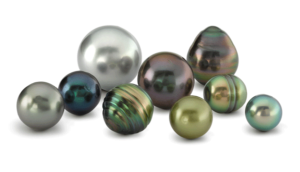
Saltwater pearls
Saltwater pearls are much rarer and more valuable than freshwater pearls. These saltwater pearls are rare, but they appear to be more well-known. The historical value of saltwater pearls contributes to their extreme popularity.
Because saltwater pearls have a much larger center than freshwater counterparts, they are found in rounder shapes. Additionally, because saltwater clams are a different species than freshwater clams, you can probably have various colors.
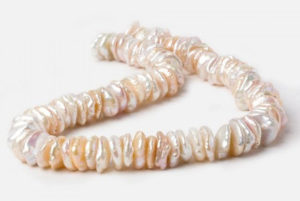
What are the four types of pearls?
There are four main types of pearls that come in a variety of shapes, colours, and sizes. Freshwater pearls. Freshwater pearls are the most common and least expensive. … Akoya pearls. Deemed the classic pearl, these come to mind when you think about the perfect pearl. … Tahitian black pearls. … South Sea pearls.
What kind of pearl is the most expensive?
South Sea pearls South Sea pearls are considered the most valuable. They are also the largest pearl variety on the market. A strand of South Sea pearls can range from $1,000 to over $100,000.
What are the highest quality pearls?
White South Sea and Golden South Sea pearls are the most sought-after cultured versions of the gems in the world. That’s because they are the rarest, and offer the most luster and greatest pearls sizes. Both Golden South Sea and White South Sea pearls are cultivated in saltwater.
What type of pearl is the rarest?
There are various types of rare natural pearls in the world, but the rarest pearl in the world is the Melo Melo pearl. Some may argue it is not a true pearl since it is non-nacreous, but it is still referred to as a pearl and highly valued, particularly in intense orange hues.
What type of pearl is flat?
Mabe pearl The Mabe pearl, which actually grows in the shells mollusks they form in. This is why Mabe pearls are flat. A flat pearl may not sound like the best thing to make a string necklace out of, but they make beautiful, unique pendants, earrings, and rings!
How long does it take for an oyster to make a pearl?
Some pearls can develop in a period of six months. Larger pearls can take up to four years to develop. This is one of several reasons why larger pearls can yield higher values. Pearl farmers must have immense patience to wait for a pearl inside an oyster shell to develop.
Are Tiffany pearls worth it?
Are Tiffany Pearls Good Quality? Definitely! Tiffany’s sell some VERY high-quality pearls, and their jewelry craftsmanship is impeccable. Their Tahitian and South Sea pearl jewelry offerings are nothing less than gorgeous.
Do real pearls turn yellow?
Yellow pearls typically indicate that pearls are real since artificial pearls don’t normally change color. While natural white pearls can yellow with age, there are such things as naturally yellow pearls. … These iconic fashion accessories usually turn yellow as time passes because they dry out.
What is the rarest pearl color?
Blue pearls from the South Seas that occur naturally are probably the rarest of all naturally occurring pearl colors. Unlike other pearl types, blue pearls are said to get their color from a metabolic disorder that the mollusk has.
Are Belle de Mer pearls real?
In order to grow freshwater pearls, farmers take healthy surrogate mussels and delicately implant them with a number of tiny slivers of mantle tissues surgically removed from donor mollusks. Slowly and magnificently, a smooth pearl evolves.
Which is better freshwater or saltwater pearls?
Traditionally, freshwater pearls are usually more durable than saltwater pearls. This is because the nacre used to create these pearls is way thicker than the nacre found in saltwater pearls. So, if you’re planning on wearing your pearls regularly, fresh water is probably the better option.
Are there real black pearls?
A natural black pearl is more expensive and mysterious than its classic off-white cousins. … If an oyster that typically produces white pearls has an unusual black coloring in its nacre, it too can create a blackish pearl. This, however, is rare; it occurs in only one in 10,000 pearls.
Which Colour pearl is best?
white The most classic and widely preferred pearl color is white. The white pearl is considered a symbol of purity and is often associated with wedding and graduation celebrations.
What is a blue pearl?
Blue pearls represent truth, tranquility, trust, and courage. Give a blue pearl to someone who needs strength in their life or who appreciates the peaceful and tranquil moments.
